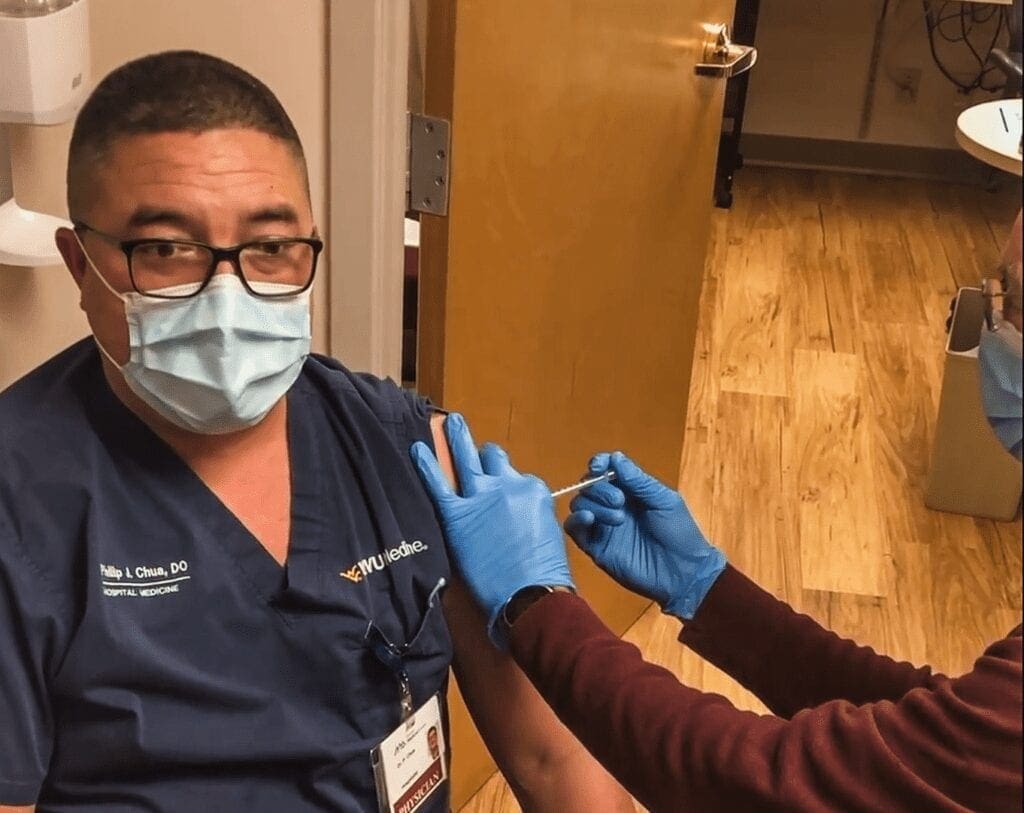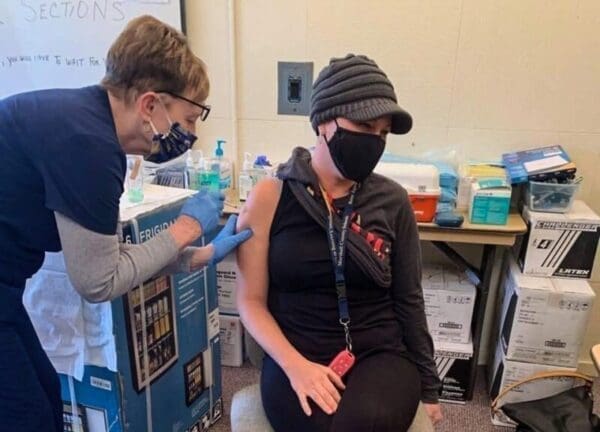If a nurse or a first responder in Ohio or Marshall County was inoculated with the Pfizer/BioNTech, they must receive their second shot 21 days later. If it were the recently approved dose from Moderna, the second vaccination needs to be in 28 days.
It’s all about the timing, according to officials with the pharmaceutical firms, so the vaccines can increase an individual’s immunity to Covid-19 by more than 90 percent. Lou Vargo, the director of the Ohio County Emergency Management Agency, received his first dose on Dec. 18, so that means he will schedule his second shot for Jan. 8.
“Once you get the first shot, you’re on the clock because the second Pfizer vaccination has to take place 21 days later for it to give you the 95 percent efficacy that Pfizer reported after their clinical trials,” Vargo said. “Once we receive the doses for the second vaccination, those people will get an email letting them know when to come back for the second shot.
“We’re going to do everything we can to make sure that those second shots get out to the people in the first phases of distribution, and then we’ll go from there. It’s all about the supply, and we are in communication with the state on a daily basis,” he said. “Now that the Moderna vaccine has been approved by the federal government, we expect the number of vaccinations to increase around the state, but the people at the hospital and the full-time first responders who have been inoculated so far, they will have to get the Pfizer vaccine again.”
Vargo is confident in the current distribution process in West Virginia, and with the plan he and Howard Gamble, administrator of the Ohio County Health Department, have been following.
“There is some concern about the timing, but that’s because none of us have done this before. We have been told to expect distribution to take place every week,” he reported. “That’s why, when we receive those shipments, we have to make sure they got the second shot before moving forward and adding new people. But I do feel very comfortable with the way it has been working so far.
“I know the people with the West Virginia National Guard are working very hard to get the doses to a number of locations in the state as quickly as possible,” Vargo said. “All the information is in a database to ensure that the hospitals, the first responders, and the nursing homes get that second vaccine at the right time.”

Phase One
According to the Center of Disease Control and Prevention, the first phase of distribution targets hospital employees and first responders. The second part includes residents and employees at nursing homes.
Wheeling Hospital received 180 doses for employees of the emergency room, intensive care units, and for the facility’s Covid unit. The Wheeling-Ohio County Health Department received 100 doses for full-time first responders. In Marshall County, EMA Director Tom Hart has supervised the same process.
“We have been very busy with our hospital and getting the vaccine out to our first responders,” he explained. “Right now, I’m not sure how long that will take because once the state gets the vaccine out, we have to get it into the arms as soon as possible.
“There are time constraints involved because once an individual is inoculated, they have to get the second shot in three weeks for it to be as effective as possible so a lot depends on the supply and distribution,” Hart said. “There is a lot of accountability involved and that is why every dose is tracked closely. It’s really important that this process is carried out the way it’s supposed to be.”

Neither Vargo nor Hart reported any complications with the administration of the Pfizer vaccine, or any negative reactions experienced by those who have been inoculated thus far. The CDC has advised individuals to consult with their physicians if they suffer from allergies but added that the dose should be safe for most.
“We have been asking them to stick around for 10 to 15 minutes to make sure there wasn’t a bad reaction,” Vargo said. “The process includes a medical screening for each individual just to make sure there’s not a vaccine allergy involved, but we have not seen anything more than what we expected.
“I did have a sore arm after I received the first dose, but as I tell people all the time, anytime someone has a needle shoved into an arm muscle, there’s going to be some soreness,” he said. “The soreness I experienced was gone by the next afternoon and I was fine. There have been some reactions reported across the nation, but we haven’t seen anything more than the sore arm.”
Hart reported similar news out of Marshall County, and he holds hope the two vaccines will end the coronavirus pandemic that has crippled the economy and caused record-setting unemployment rates across the country.
“I think the vaccine is a start, but there is a lot that remains to be seen,” he said. “I know there is a lot of interest in it and they are still in process of rolling it out to everyone included in the first phase of distribution. There are concerns about distribution and allocation over the next couple of weeks in West Virginia, but we’ll have to see how that plays out.
“We’re just hoping that it has a positive effect on the numbers because I don’t know if I have ever seen a situation that has been so fluid before,” Hart added. “Things seem to change on a daily basis, and sometimes even on an hourly basis, so we just wait for the emails and the phone calls so we know what to expect.”




